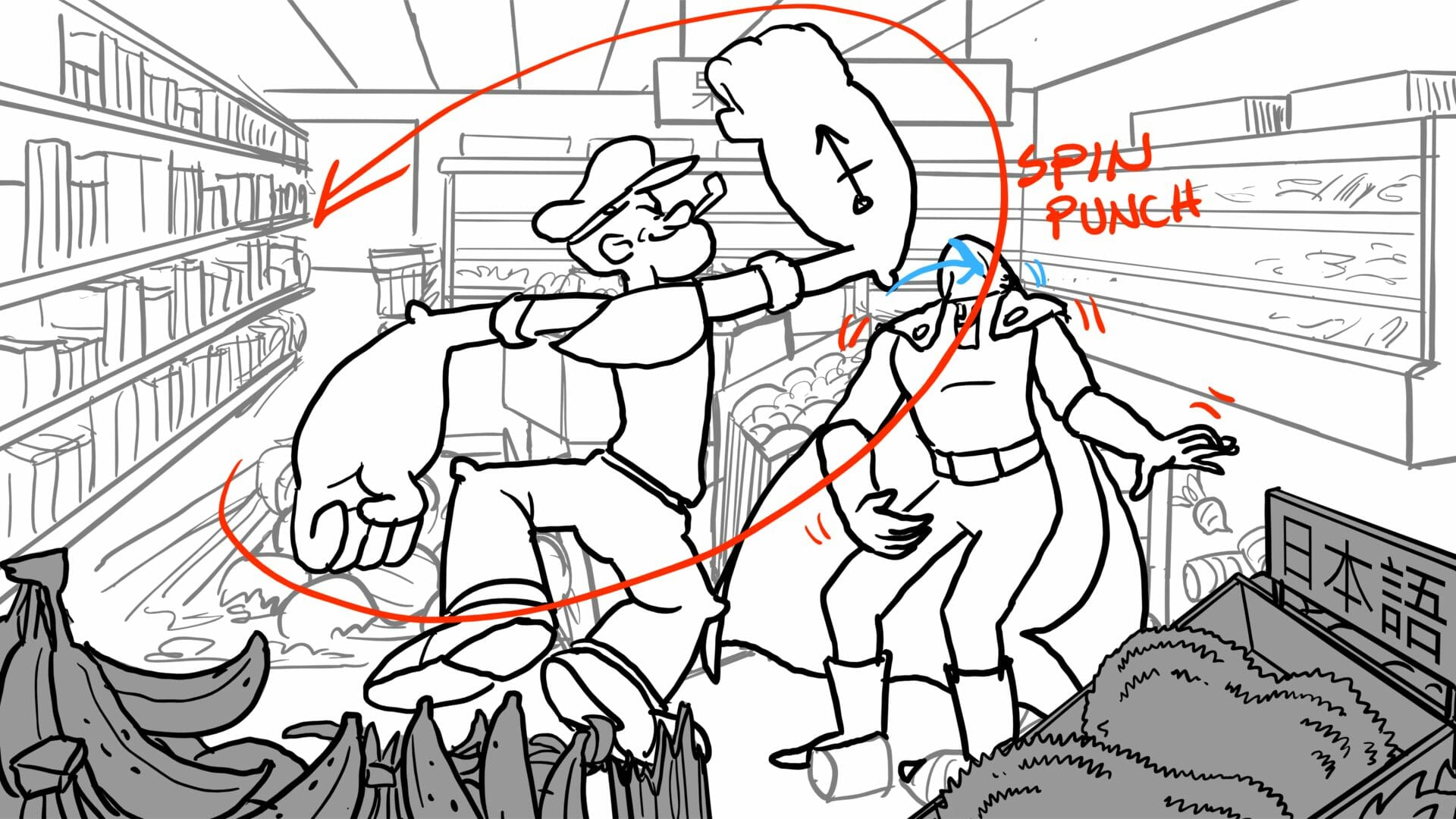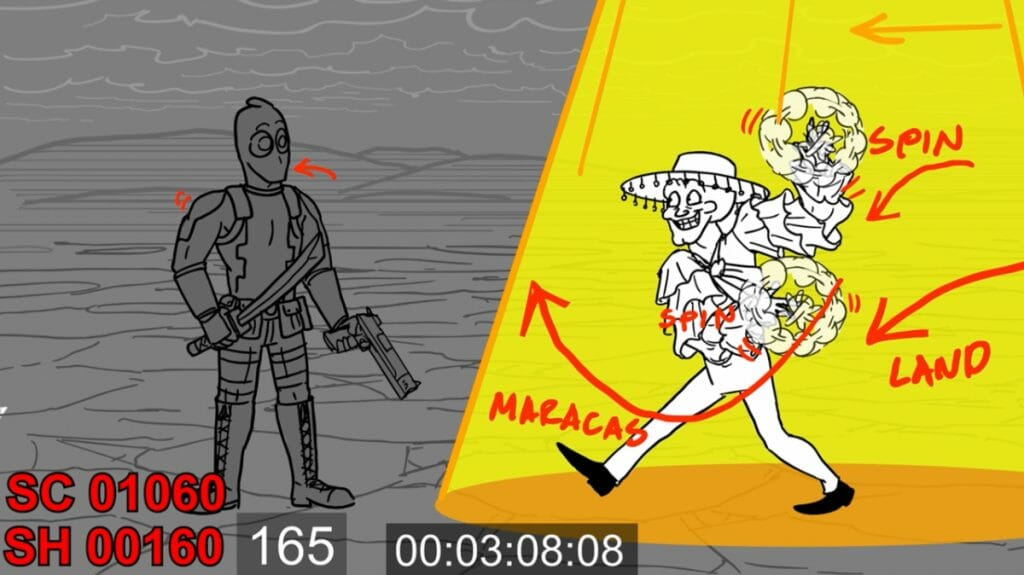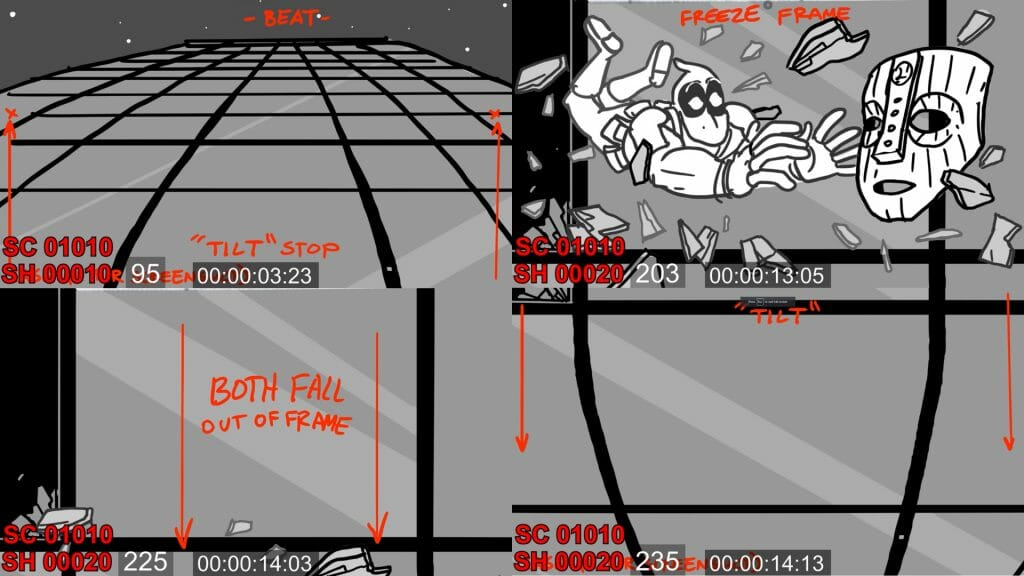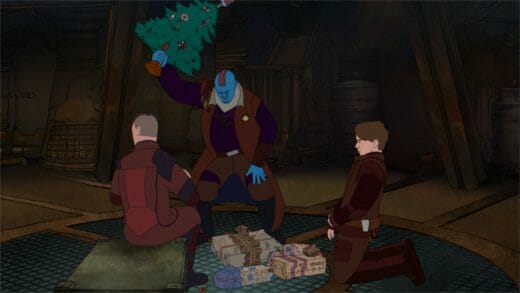
Who doesn’t love a crossover episode? There is something special about seeing your favourite characters from different franchises cropping up in other universes that fires up the imagination and opens new realms of possibilities. It can help establish your favorite characters as being larger than the shows that birthed them, making them all the more iconic! This is a concept that production artist and storyboard artist Al McClelland, Jr. picked up and ran with throughout his work on the high-octane Death Battle series for Rooster Teeth.
The series pits two famous characters from classic animation together in an no-holds-barred fight, showcasing the superpowers and signature moves that they are best known for. In one episode, E. Segar’s Popeye faces off against Saitama from One Punch Man, a brawl that could only ever occur within the depths of one’s imagination.
We spoke to Al to learn more about the making of Death Battle. Of special interest to aspiring storyboard artists is the range of animated styles that each episode cycles through. Making this collage of stylistic choices work together is a heroic feat, and luckily Al sat down with us to share insights from the production. Being the lead storyboard artist on the project, Al’s interview focuses on storyboarding 2D fight scenes.
Shot comparison of Al McClelland’s animatic and the final animation. Visit Rooster Teeth’s YouTube Channel for the full animated short.
For readers who aren’t aware, please introduce yourself and your story in animation so far!
I’m Al McClelland, Jr., a graduate of the Cleveland Institute of Art (2010). I’m currently a 2D illustrator for Roarty Digital, an outfit based out of Vancouver, British Columbia. I was formerly the Senior Production Artist for Warner Media Discovery: Rooster Teeth out of Austin,Texas.
I have generated a whole bunch of storyboards, backgrounds and character turnarounds for shows like RWBY, Camp Camp, Red vs. Blue, Death Battle and a bunch of other projects that center on action and comedy!
Where did the idea come from to create these deathmatches featuring famous animated characters?
I can probably thank the Death Battle team for that one! Death Battle is a Rooster Teeth property helmed by Ben Singer and his great team of writers, researchers, artists and animators that has been pitting everyone’s favorite characters against each other since 2010. They approached me and the 2D team a few years ago to make storyboards for a larger scale 2D fight using Storyboard Pro.
The first project we collaborated on was a fight between Deadpool and The Mask. They liked how we handled the humor and visual jokes of that fight so much we started regularly tackling 2D fights each season. Other fights I storyboarded include Genos vs. War Machine, Macho Man, vs. Koolaid Man, and Popeye vs. Saitama. Being able to make an entertaining fight using so many different characters involves being a fan, watching a lot of cartoons, and knowing how to draw. The regular storyboard artist for the Death Battle team, John Mitchell, and I got to nerd out about our favorite moments from cartoons a bunch!

Why do you choose to board in Storyboard Pro, and what are some of its advantages for a project like Death Battle?
Storyboard Pro is one of those programs that is just a powerhouse when it comes to helping artists tell visual stories. We’re able to edit multiple panels at once, automatically fill colors, set up parallaxing shots with the camera tools and automation. I cannot thank the Toon Boom team enough for offering so many options for automatically naming things with their export tools. That makes situations like collaborating with other artists, and assigning specific portions of a script, that much easier when a production’s pace starts to speed up.
My absolute favourite aspect of Storyboard Pro is using vector layers. Being able to use a drawing for multiple kinds of shots is a breeze. You don’t have to worry about pixel fuzziness when a vector drawing can be adjusted with just a few clicks.
Are all of these characters drawn from scratch?
Yes! With the caveat that I reuse those drawings as much as possible. The character pipeline usually started with Laurin Crozier, another senior production artist on the team. She was responsible for some incredible character turnarounds that made for great reference when drawing the boards. My storyboarding process involved watching a bunch of reference animation for the characters and coming up with a rough design.
It could be a blend of every form a character ever took or, more often, recreating a very specific version of that character. As I make the boards and redraw the character, I’ll eventually generate enough views of that character that I can copy-paste those drawings into new shots. I will either reuse a previous drawing unedited or use that drawing as reference for the pose that I want. By limiting the amount of time I spend re-drawing, Storyboard Pro allows me to average about four storyboard panels an hour on scripts that regularly have about 200 or more panels.

How did you recreate famous characters like Popeye, The Mask or the Kool-Aid Man?
Being a fan of all of these characters prior to working on the episode definitely helped! That said, getting the motion right for each character would involve watching a lot of references on how those characters ‘feel’ while in motion. One aspect of Death Battle is an educational rundown. They end up showing some feats-of-strength directly from that character’s catalogue. A huge attack in the script might be 1-for-1 with something we can see in that character’s show.
Oftentimes, we get to combine references between the two worlds. For example, when someone like Saitama from a trope-filled anime-action world is getting punched by someone like Popeye from a cartoon-logic visual-joke world, things can get pretty weird. Characters like the Mask with his own 90’s cartoon and comic book operates solely on cartoon logic. In that case, I got to reference tons of different cartoons I love while sprinkling in a dash of Bugs Bunny-style shenanigans.
Handling Kool-Aid Man was more of a challenge honestly because for ‘legal beverage company reasons,’ he’s almost never depicted fighting someone. Turning his magical powers into something closer to what a mage or wizard might use as an attack was a lot of fun and allowed me to combine my love of over the top commercials and Dungeons & Dragons.

What are some techniques you used in Storyboard Pro during the storyboarding process?
One of my favorite camera techniques used in 2D storytelling is called a ‘banana pan.’ It’s very useful when you want to make an environment feel real in the shot. You place your camera near a large set piece, so that when you pan across it. Part of the background will be closer to the camera than the rest of it, resulting in a background with a curved perspective. The final background art usually ends up looking like a funky banana. You can see an example of a banana pan in the first two shots of the Mask vs. Deadpool fight.
My other favorite is called a ‘parallaxing shot.’ It’s a shot with a camera movement big enough to justify separating a background into multiple parts like a foreground, middleground and background. As the camera moves through the shot, the different layers of background scroll past at different speeds. It gives the illusion of camera motion through 3D space. You can see an example of parallaxing in a few shots of my original pitch, Scale.
The completed animation showcases a variety of animated styles, with 3D and scrolling pixelated moments. Can you talk us through some of the stylistic choices?
A lot of those concepts happen at the script writing stage. The Saitama vs Popeye fight was written by the incredibly talented Liam Swan. The research stage of Death Battle episodes often come up with insane numbers.In this fight we ended up measuring things in Yottatons. Based on that, Ben and Liam had the idea of hits getting so intense that reality breaks.
That meant combining work from the different Death Battle animation teams which was managed by Luis Cruz, Death Battle‘s animation director. Luis guided the style choices of the sprite art and 3D character art. John Mitchell excels at sprite fights and 3D fights so he handled those scenes while I handled the portions that would be made using Toon Boom Harmony. There was also an amazing section of the 3D fight solely handled by Devil Artemis.

What are some of the challenges when blending different styles of animation into one project?
A big part of collaboration is just keeping an open line of communication with the people you’re working with. I had John Mitchell and I make the last frames of our transitional shots first so we could hook them together quickly when we got to that point. We also brainstormed what special effects we would use where to help make the transitions sync up. Matching character frame-size and position really helps sell a reality-bending cut between scenes.
How has it been pivoting to short-form content on TikTok and what are some tips for animators seeking an audience for their work on that platform?
Making the parody shorts for youtube and TikTok has been a fun way to keep my storyboarding and animation skills sharp between contracts. TikTok is unique in that it enables users to passively share sounds for other people to use in their own work. It’s sort of a perfect place to collaborate as a visual storyteller because there are so many potential stories to pick from. What’s been working for me as I make them is if the audio makes me laugh out loud, and if I laugh while putting it together in Storyboard Pro, there’s a good chance the other people will like the video too!
Here’s a popular one I animated in Storyboard pro which uses a sound by the extremely talented Daniel Ross.
Do you have anything exciting coming up you would like to announce or mention?
My current gig is locked behind an NDA but I’m planning on releasing more shorts this year as my free time allows. My next video will be a parody referencing one of my favorite shows right now. I also have a few other secret ideas brewing y’all can see later this year!
When I’m not doing my day job or animating just for fun, I’m a part of a One Piece podcast called Ya Yo Talk Show. My friends Molly Flood, Mark B. Donica, Kdin Jenzen and I share our thoughts on the 1000+ episode series while we watch Kdin enjoying it for the first time. You can follow the podcast most places like Twitch, Twitter, Tumblr, and Youtube at @Yayotalkshow and you can follow me on Twitter, Instagram, TikTok and Youtube.
- Interested in seeing more behind-the-scenes boards from Al McClelland, Jr.? Be sure to visit Al’s storyboard portfolio on his website.
- For more Death Battle episodes, visit the series’ official channel on Rooster Teeth.
- Ready to start storyboarding your next project? Download a 21-day trial of Storyboard Pro.



